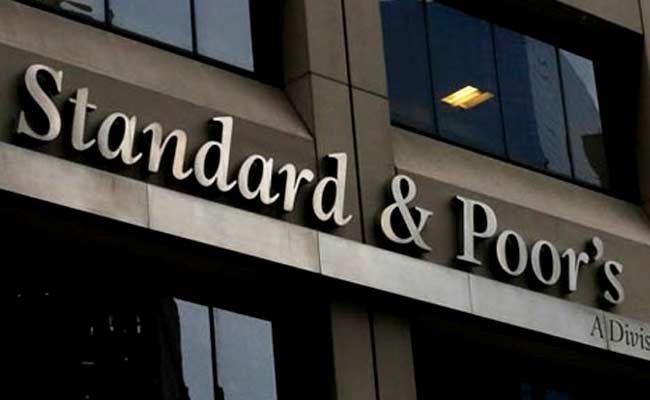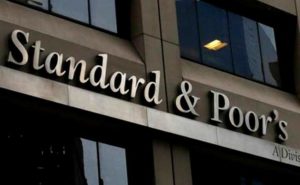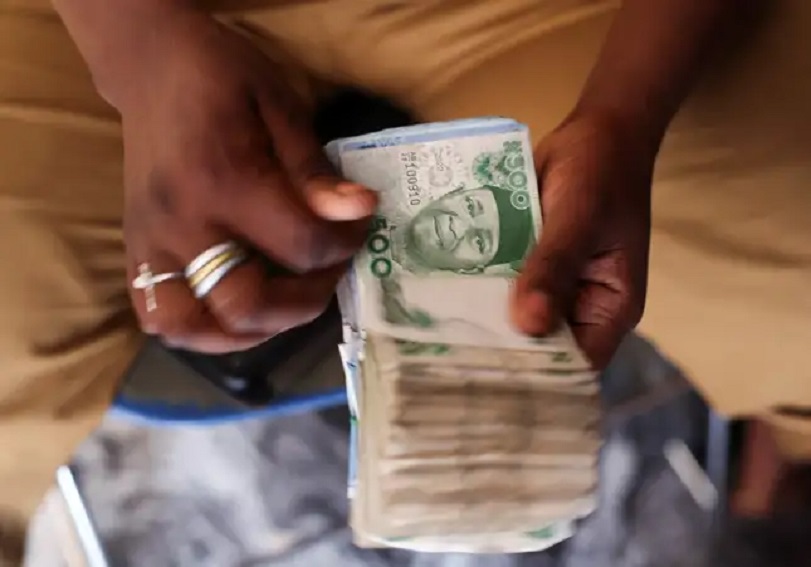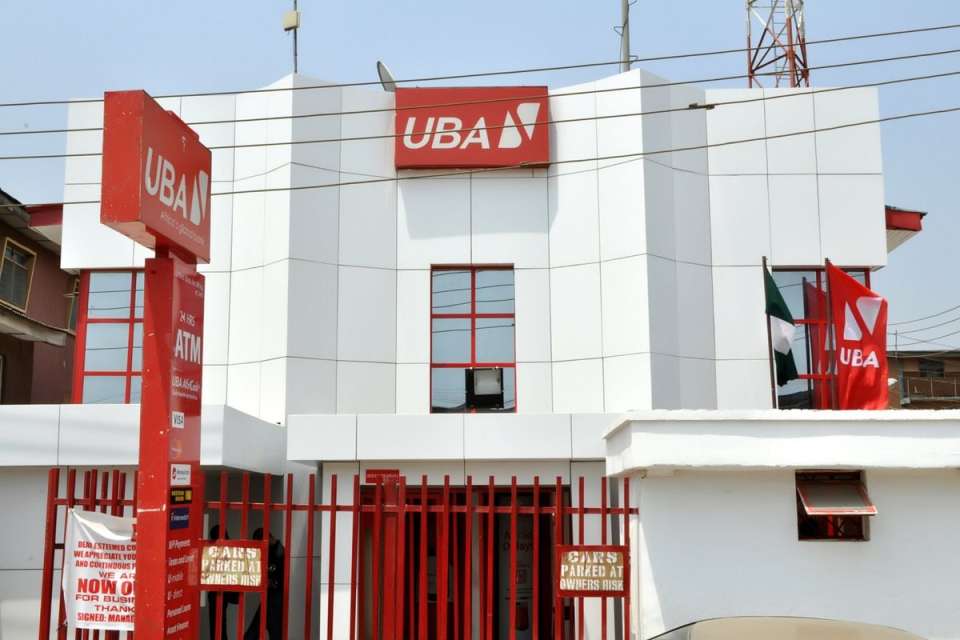Economy
S&P Assigns ‘B/B’ to Nigeria with Outlook Stable


By Modupe Gbadeyanka
One of the leading rating agencies in the world, S&P Global Ratings, has affirmed its ‘B/B’ long- and short-term sovereign credit ratings on Nigeria with a stable outlook.
At the same time, it affirmed its long- and short-term Nigeria national scale ratings at ‘ngBBB/ngA-2’.
S&P Global Ratings said the ratings on Nigeria are constrained by its low level of economic wealth, real GDP per capita trend growth rates below those of peers with similar levels of development, and future policy responses that may be difficult to predict because of the highly centralized political environment.
The ratings are supported by relatively low general government debt and modest fiscal deficits, it said.
In a statement, S&P Global Ratings said it expects Nigeria’s economy to achieve real GDP growth of 1.5 percent in 2017 and 3.4 percent on average over 2017-2020, supported by improvements in the oil sector and improved government budget execution under its recently released Economic Recovery and Growth Plan 2017-2020.
It further said a gradual increase in foreign currency inflows through rising export revenues and government external borrowing could help reduce foreign currency shortages in the non-oil sector and allow industry and financial sectors more leeway to contribute to economic growth.
Nevertheless, on a per-capita basis, real GDP trend growth of 0.4 percent (which we proxy by using 10-year weighted-average growth) remains below that of peers with similar wealth levels. Nigeria has significant infrastructure and energy shortfalls and low income levels, with GDP per capita at $1,800 in 2017.
Nigeria is a sizable producer of hydrocarbons. The oil sector’s direct share of nominal GDP is officially estimated at about 10 percent, while oil and gas account for over 90 percent of exports and at least half of fiscal revenues.
“Although oil revenues support the economy when prices are high, we view them as exposing Nigeria to significant volatility in terms of trade and the government to swings in the revenue base,” it said.
Oil’s relatively small contribution to GDP results from the country’s large and growing population, estimated at about 192 million people in 2017, which has resulted in the emergence of other large sectors, such as agriculture (22% of GDP), trade (18%), and information and communication (12%).
Nevertheless, the oil sector has a significant indirect impact on the economy. A marked contraction in oil production, slower implementation of fiscal policy, and a restrictive exchange-rate regime
resulted in Nigeria’s economy contracting, in real terms, by 1.5% of GDP in 2016. Since then, oil production has increased back above 2 million barrels per day (bpd) in early 2017 (against the about 1.6 million bpd reported at times in the second half of 2016).
Oil production has been supported by reduced incidents of sabotage in the Niger Delta as the government’s engagement with community leaders appears to have borne fruit, while repairs are being completed on key export pipelines.
“We have marginally increased our oil price assumptions (see “S&P Global Ratings Raises Its Oil And Natural Gas Prices Assumptions For 2017,” published Dec. 14, 2016, on RatingsDirect) to an average US$53 per barrel (/bbl) over 2017-2020, compared with US$51/bbl at the time of our previous review in September 2016 (see “Federal Republic of Nigeria Ratings Lowered To ‘B/B’ On Weak Growth Dynamics; Outlook Stable,”),” S&P Global Ratings said.
Economy
Customs Street Chalks up 0.12% on Santa Claus Rally

By Dipo Olowookere
The Nigerian Exchange (NGX) Limited witnessed Santa Claus rally on Wednesday after it closed higher by 0.12 per cent.
Strong demand for Nigerian stocks lifted the All-Share Index (ASI) by 185.70 points during the pre-Christmas trading session to 153,539.83 points from 153,354.13 points.
In the same vein, the market capitalisation expanded at midweek by N118 billion to N97.890 trillion from the preceding day’s N97.772 trillion.
Investor sentiment on Customs Street remained bullish after closing with 36 appreciating equities and 22 depreciating equities, indicating a positive market breadth index.
Guinness Nigeria chalked up 9.98 per cent to trade at N318.60, Austin Laz improved by 9.97 per cent to N3.20, International Breweries expanded by 9.85 per cent to N14.50, Transcorp Hotels rose by 9.83 per cent to N170.90, and Aluminium Extrusion grew by 9.73 per cent to N16.35.
On the flip side, Legend Internet lost 9.26 per cent to close at N4.90, AXA Mansard shrank by 7.14 per cent to N13.00, Jaiz Bank declined by 5.45 per cent to N4.51, MTN Nigeria weakened by 5.21 per cent to N504.00, and NEM Insurance crashed by 4.74 per cent to N24.10.
Yesterday, a total of 1.8 billion shares valued at N30.1 billion exchanged hands in 19,372 deals versus the 677.4 billion shares worth N20.8 billion traded in 27,589 deals in the previous session, implying a slump in the number of deals by 29.78 per cent, and a surge in the trading volume and value by 165.72 per cent and 44.71 per cent apiece.
Abbey Mortgage Bank was the most active equity for the day after it sold 1.1 billion units worth N7.1 billion, Sterling Holdings traded 127.1 million units valued at N895.9 million, Custodian Investment exchanged 115.0 million units for N4.5 billion, First Holdco transacted 40.9 million units valued at N2.2 billion, and Access Holdings traded 38.2 million units worth N783.3 million.
Economy
Yuletide: Rite Foods Reiterates Commitment to Quality, Innovation

By Adedapo Adesanya
Nigerian food and beverage company, Rite Foods Limited, has extended warm Yuletide greetings to Nigerians as families and communities worldwide come together to celebrate the Christmas season and usher in a new year filled with hope and renewed possibilities.
In a statement, Rite Foods encouraged consumers to savour these special occasions with its wide range of quality brands, including the 13 variants of Bigi Carbonated Soft Drinks, premium Bigi Table Water, Sosa Fruit Drink in its refreshing flavours, the Fearless Energy Drink, and its tasty sausage rolls — all produced in a world-class facility with modern technology and global best practices.
Speaking on the season, the Managing Director of Rite Foods Limited, Mr Seleem Adegunwa, said the company remains deeply committed to enriching the lives of consumers beyond refreshment. According to him, the Yuletide period underscores the values of generosity, unity, and gratitude, which resonate strongly with the company’s philosophy.
“Christmas is a season that reminds us of the importance of giving, togetherness, and gratitude. At Rite Foods, we are thankful for the continued trust of Nigerians in our brands. This season strengthens our resolve to consistently deliver quality products that bring joy to everyday moments while contributing positively to society,” Mr Adegunwa stated.
He noted that the company’s steady progress in brand acceptance, operational excellence, and responsible business practices reflects a culture of continuous improvement, innovation, and responsiveness to consumer needs. These efforts, he said, have further strengthened Rite Foods’ position as a proudly Nigerian brand with growing relevance and impact across the country.
Mr Adegunwa reaffirmed that Rite Foods will continue to invest in research and development, efficient production processes, and initiatives that support communities, while maintaining quality standards across its product portfolio.
“As the year comes to a close, Rite Foods Limited wishes Nigerians a joyful Christmas celebration and a prosperous New Year filled with peace, progress, and shared success.”
Economy
Naira Appreciates to N1,443/$1 at Official FX Market

By Adedapo Adesanya
The Naira closed the pre-Christmas trading day positive after it gained N6.61 or 0.46 per cent against the US Dollar in the Nigerian Autonomous Foreign Exchange Market (NAFEM) on Wednesday, December 24, trading at N1,443.38/$1 compared with the previous day’s N1,449.99/$1.
Equally, the Naira appreciated against the Pound Sterling in the same market segment by N1.30 to close at N1,949.57/£1 versus Tuesday’s closing price of N1,956.03/£1 and gained N2.94 on the Euro to finish at N1,701.31/€1 compared with the preceding day’s N1,707.65/€1.
At the parallel market, the local currency maintained stability against the greenback yesterday at N1,485/$1 and also traded flat at the GTBank forex counter at N1,465/$1.
Further support came as the Central Bank of Nigeria (CBN) funded international payments with additional $150 million sales to banks and authorised dealers at the official window.
This helped eased pressure on the local currency, reflecting a steep increase in imports. Market participants saw a sequence of exchange rate swings amidst limited FX inflows.
Last week, the apex bank led the pack in terms of FX supply into the market as total inflows fell by about 50 per cent week on week from $1.46 billion in the previous week.
Foreign portfolio investors’ inflows ranked behind exporters and the CBN supply, but there was support from non-bank corporate Dollar volume.
As for the cryptocurrency market, it witnessed a slight recovery as tokens struggled to attract either risk-on enthusiasm or defensive flows.
The inertia follows a sharp reversal earlier in the quarter. A heavy selloff in October pulled Bitcoin and other coins down from record levels, leaving BTC roughly down by 30 per cent since that period and on track for its weakest quarterly performance since the second quarter of 2022. But on Wednesday, its value went up by 0.9 per cent to $87,727.35.
Further, Ripple (XRP) appreciated by 1.7 per cent to $1.87, Cardano (ADA) expanded by 1.2 per cent to $0.3602, Dogecoin (DOGE) grew by 1.1 per cent to $0.1282, Litecoin (LTC) also increased by 1.1 per cent to $76.57, Solana (SOL) soared by 1.0 per cent to $122.31, Binance Coin (BNB) rose by 0.6 per cent to $842.37, and Ethereum (ETH) added 0.3 per cent to finish at $2,938.83, while the US Dollar Tether (USDT) and the US Dollar Coin (USDC) remained unchanged at $1.00 each.
-

 Feature/OPED6 years ago
Feature/OPED6 years agoDavos was Different this year
-
Travel/Tourism9 years ago
Lagos Seals Western Lodge Hotel In Ikorodu
-

 Showbiz3 years ago
Showbiz3 years agoEstranged Lover Releases Videos of Empress Njamah Bathing
-

 Banking8 years ago
Banking8 years agoSort Codes of GTBank Branches in Nigeria
-

 Economy3 years ago
Economy3 years agoSubsidy Removal: CNG at N130 Per Litre Cheaper Than Petrol—IPMAN
-

 Banking3 years ago
Banking3 years agoFirst Bank Announces Planned Downtime
-

 Banking3 years ago
Banking3 years agoSort Codes of UBA Branches in Nigeria
-

 Sports3 years ago
Sports3 years agoHighest Paid Nigerian Footballer – How Much Do Nigerian Footballers Earn















